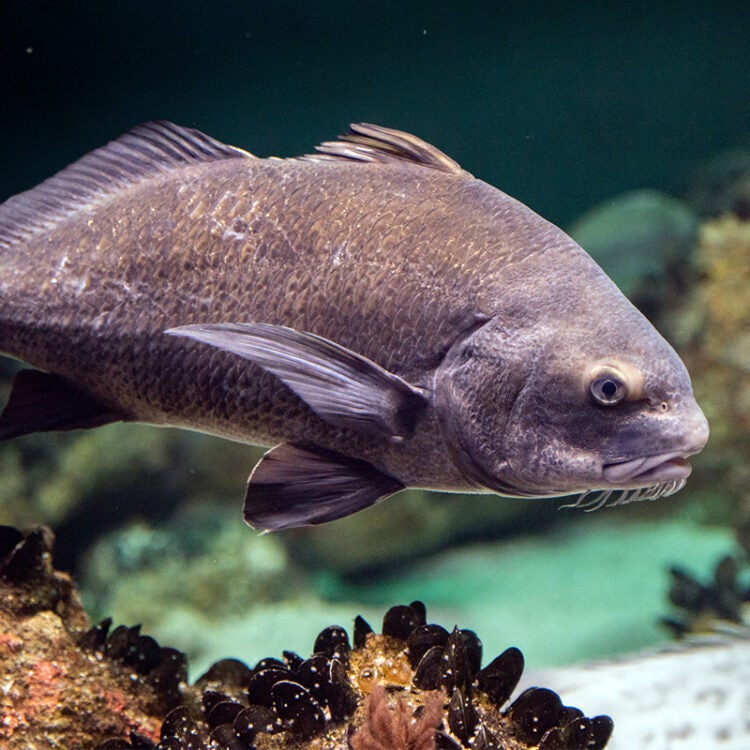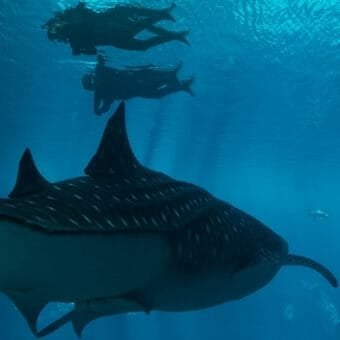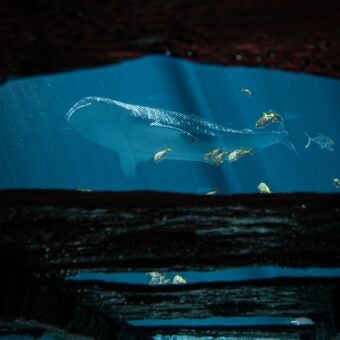-
Size
20 inches (51 cm) -
Diet
Mollusks and crustaceans -
Range
Western Atlantic -
Habitat
Coastal waters, along sandy bottoms and in brackish water near rivers
Physical Characteristics
- Common length of 20 inches (51 cm), with a maximum length of 67 inches (170 cm).
- Maximum published weight is 113 lbs. (51 kg).
- Oblong body with a short snout, barbels on the chin, a spiny dorsal fin and a soft dorsal fin.
- Silver, grey or dark brown in color. Anal and pelvic fins are usually darker in color.
- Juveniles may have 4-5 vertical black bars on the sides which disappear with age.
Animal Fact
The genus name of the black drum - Pogonias - comes from the greek word for beard, a reference to the barbels along the lower jaw of this fish, used when foraging for food along the bottom.
Diet / Feeding
- Diet varies depending on life stage. Larvae feed on zooplankton. Juveniles feed on a variety of crustaceans, fish and annelids. Adults consume mollusks and crustaceans.
Range / Habitat
- Occurs in the Western Atlantic from Nova Scotia to Florida, as well as Brazil to the southern tip of Argentina. Also occurs in the Gulf of Mexico, along coasts in the Caribbean, along the northern coast of South America.
- Found in coastal waters, along sandy bottoms and in brackish water near rivers. Juveniles may be found in estuaries.
Reproduction & Growth
- Spawns near shore, in estuaries or in bays. The spawning season depends on geographical location.
- Matures between the ages of two and six years of age. Males tend to mature earlier than females.
Conservation Status
- “Least Concern” on the IUCN Red List.
Additional Information
- The maximum reported age is 43 years.






